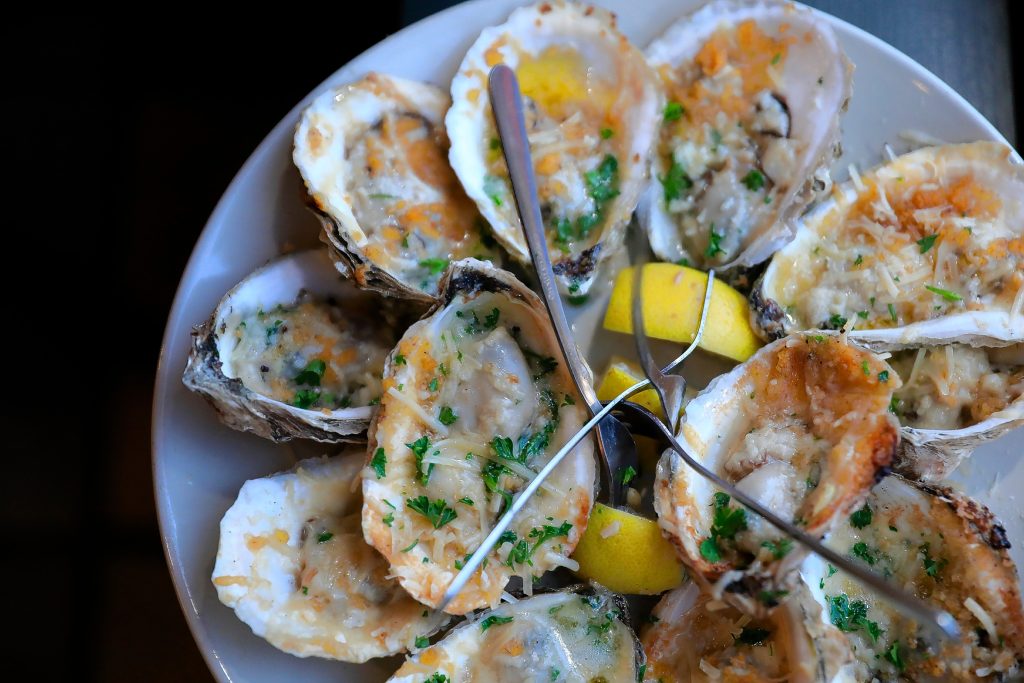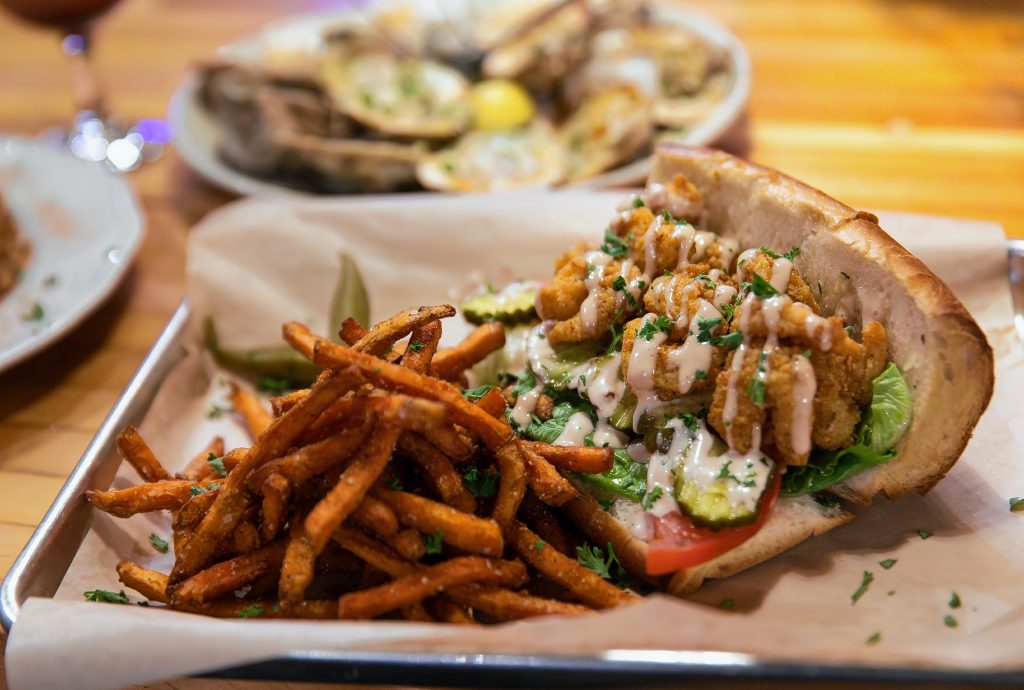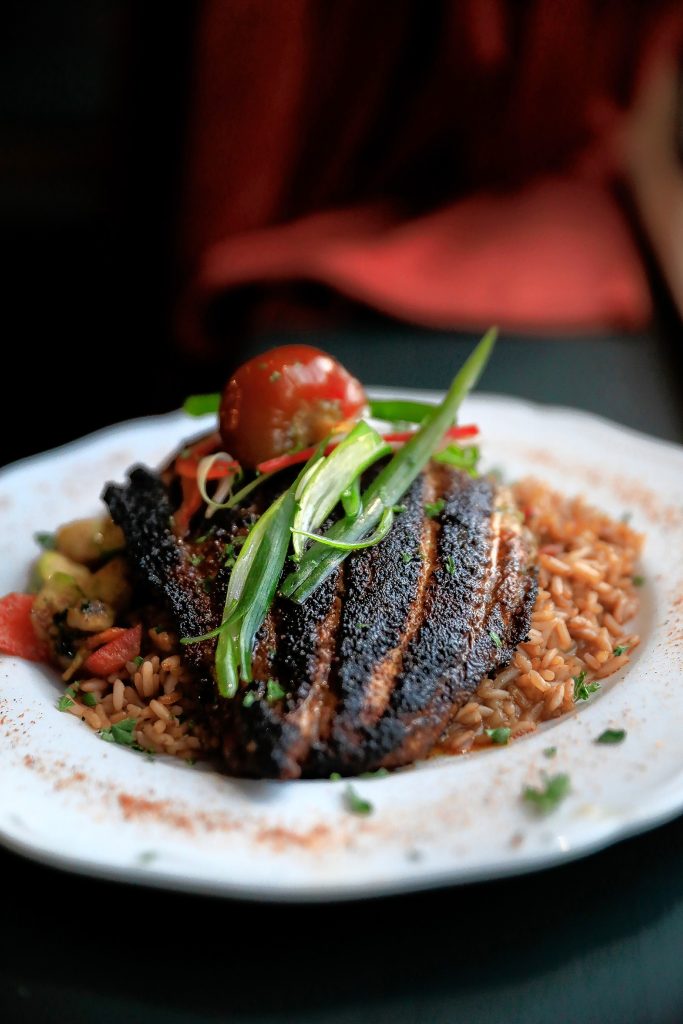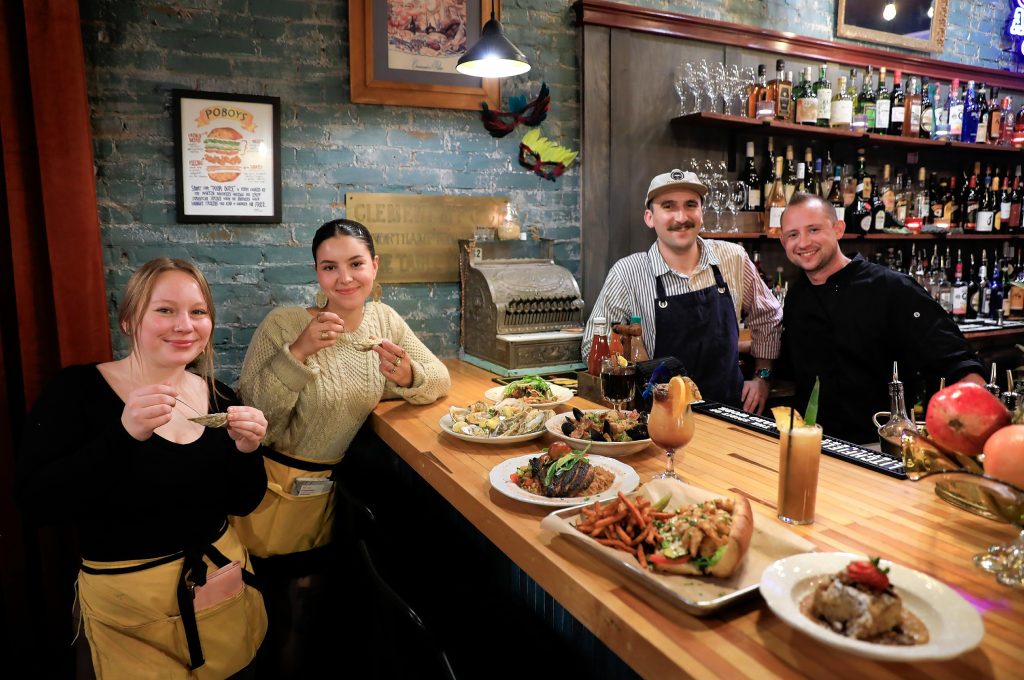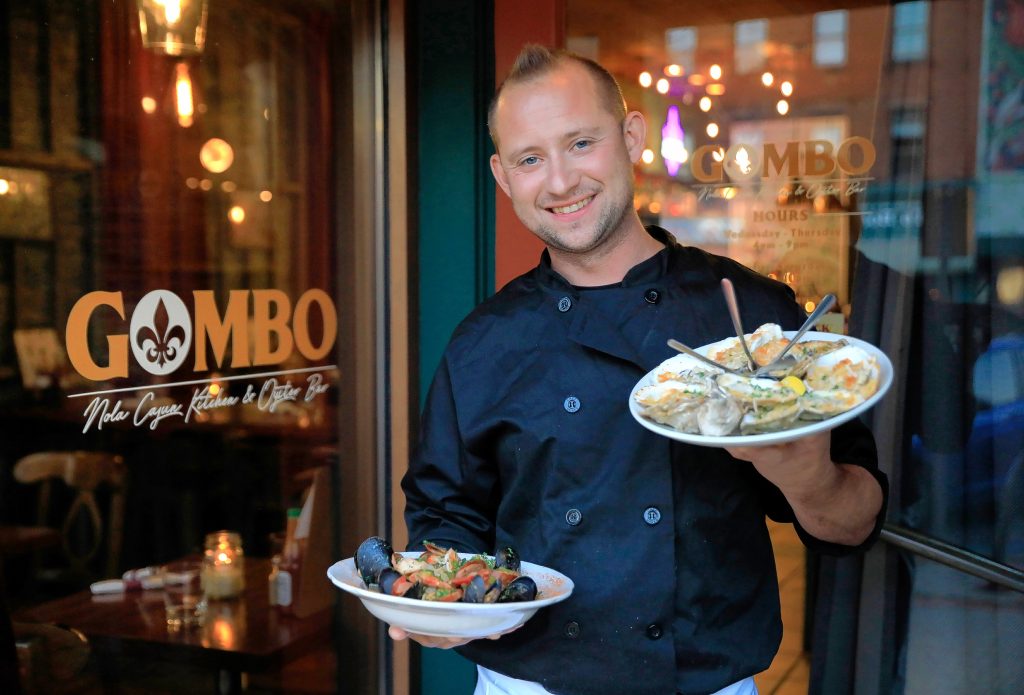By ROBIN GOLDSTEIN
For the Advocate
In New Orleans — the sultriest, eeriest, prettiest and drunkest city in America — filigree balconies dangle from creaky old mansions painted in blazing colors. Inside, on every block, their kitchens burst with the blazing flavors of the Gulf Coast.
Gombo, a New Orleans-themed restaurant that opened on Main Street in Northampton in May, is the latest curator of a downtown space that has passed through several hands in recent years (including the wonderful Wine Witch and the insufferable Belly of the Beast). Gombo’s new spin on the space is a welcome addition to the downtown dining scene.
The design takes advantage of the room’s intimate dimensions and adds warmth to the lighting and walls. Near the bar, some casual high-top seating is mixed in, giving the restaurant a vibe that preserves the convivial spirit of the Wine Witch. In summer, diners can also spread to an ample array of outdoor tables on Main Street.
Wherever you sit, you’ll be taken care of by a young, energetic staff that seem to welcome you just as enthusiastically as they would their own friends.
Next, it’ll be your turn to welcome the oysters. I always start with those here. Oysters on the half shell are clean and fresh, among the best in town — even if the mignonette sauce, my favorite raw-oyster condiment, is an outlyingly brown and salty version.
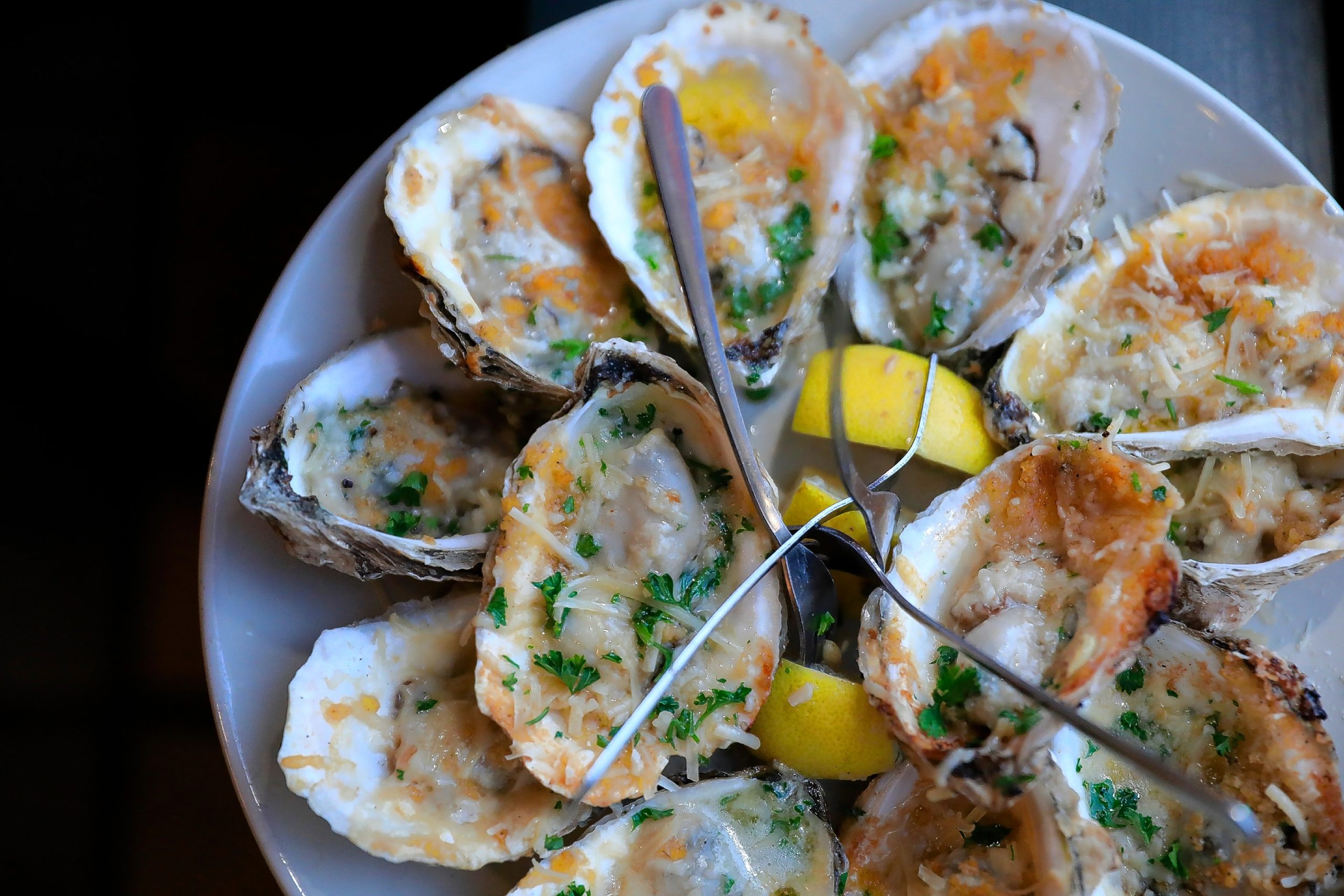
The grilled oysters with garlic butter, parmesan and panko at Gombo Nola Kitchen & Oyster Bar on Main Street in Northampton.
For me, the greatest treasure on the whole menu is hidden in an appetizer that’s simply called “grilled oysters.” They might call them “char-grilled” in New Orleans. It’s one of the simplest ways to cook oysters, and maybe the best: you drown them in garlic butter, top them with parmesan, and put them on a fire. The results are irresistible. You might go through the whole plate of six before remembering that you were sharing.
You can come to Gombo and make a perfectly good meal of oysters — including, also, oysters Rockefeller and Bienville — but that would be a foolish thing to do every time, because there’s a lot of deliciousness and creativity worth exploring throughout the menu. For starters, don’t miss the Royal Street salad, an ordinary lettuce-and-tomato mix that’s topped, to great effect, with a few big slices of crispy fried green tomatoes and a well-made remoulade.
Gombo’s kitchen has a special way with the deep fryer. Expertly formed cornmeal crusts make winners of the giant po-boys, whose baguettes are thankfully soft and squishy enough that you can barely fit a whole bite of sandwich in your mouth. (Depends on the size of your mouth, I suppose.)
Po-boys can be filled with fried oysters, boneless fried chicken, fried shrimp, fried alligator or fried eggplant. All of these versions come fully outfitted with lettuce, tomato, pickles and creamy French dressing. You should add some Trappey’s Bull — the house Louisiana hot sauce — for kick. Louisiana hot sauce, in case you’re uninitiated, is more vinegary than spicy — kind of like buffalo wing sauce — and it works great on anything fried.
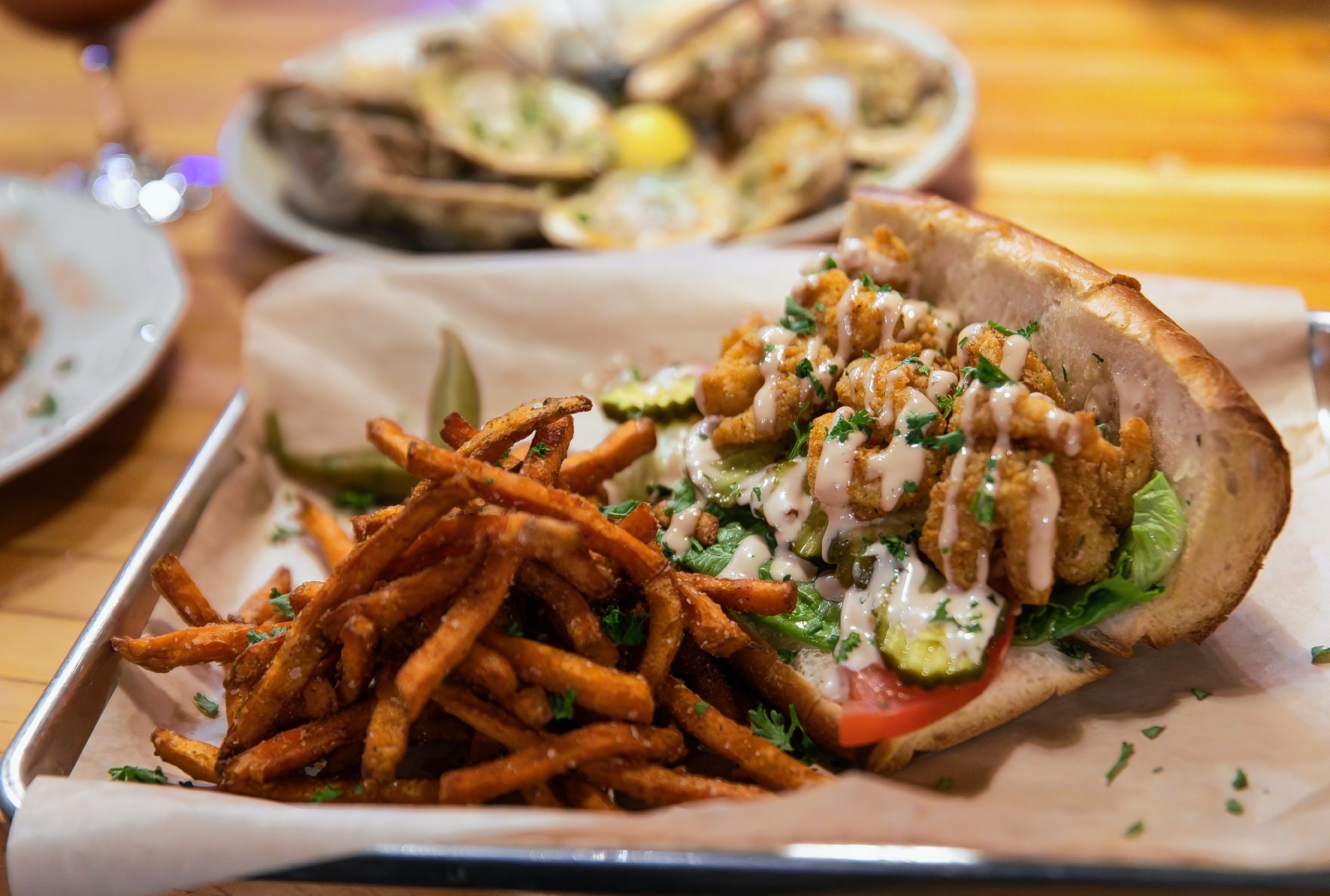
The popcorn shrimp po’ boy sandwich with French bread, lettuce, tomatoes, sweet and spicy pickles, and Creole French dressing at Gombo Nola Kitchen & Oyster Bar on Main Street in Northampton.
Beyond the po-boys, you can also get fried oysters on their own as a starter with remoulade, or fried chicken as a topping for a creamy bowl of andouille-sausage mac-and-cheese.
“Cajun Boom Boom,” the most memorable of Gombo’s original creations, combines fried okra, fried gator, toasted red chilies, and crushed peanuts with Sriracha and what they call “jambalaya sauce.” All the textural variations, the sweet-savory mix, and the mild heat combine for good fun. With each bite you need to scoop deep down into the dish and the reddish pools that lie beneath — that’s where the big repository of flavor lies.
The name “Gombo” comes from “ki ngombo,” which means “okra” in the Central Bantu dialect of West Africa. This is also where the word “gumbo” derives from, and appropriately, that classic Gulf Coast stew is a solid choice on this menu. I like the “Gumbo Ya Ya,” with a spot-on dark roux and a full, roasty flavor. It’s generously seasoned, with just enough back heat and satisfying chunks of sausage and chicken that you get to chew on.
Gumbo Ya Ya is one of several items whose menu descriptions reference the “Holy Trinity.” This bit of Creole slang was introduced to the mainstream gourmet vernacular in the early 1980s by Craig Claiborne, the longtime New York Times food critic: “A great southern chef, Paul Prudhomme of New Orleans,” Claiborne wrote in his 1982 book, “A Feast For Laughter,” “once told me that in Cajun and Creole kitchens, chopped onions, celery, and green peppers are referred to as the Holy Trinity.”
Prudhomme, it turns out, also coined the term Gumbo Ya Ya.
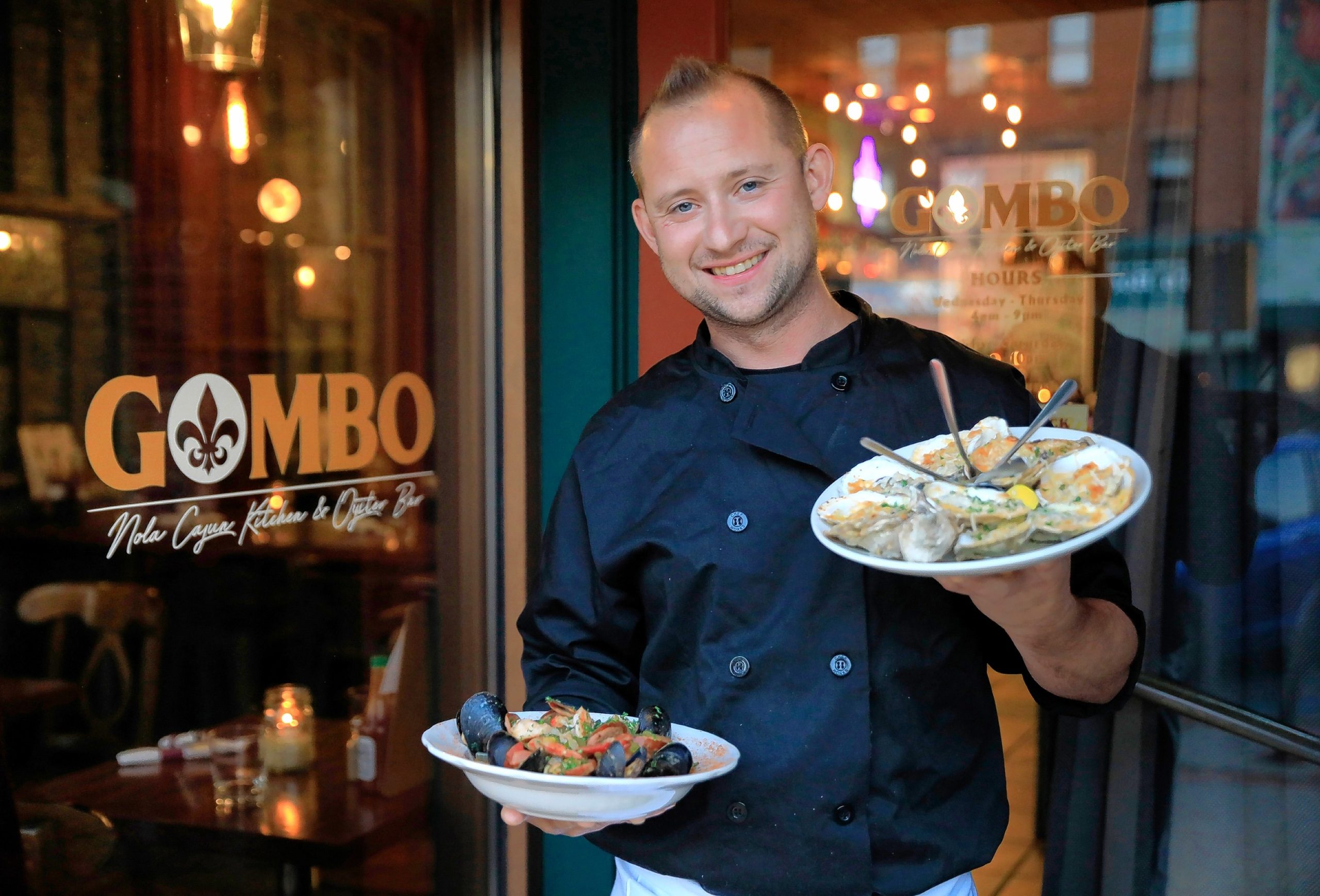
Owner and chef John Piskor with his jambalaya and grilled oyster dishes at Gombo Nola Kitchen & Oyster Bar on Main Street in Northampton.
The Holy Trinity is a Creole spin on mirepoix, a flavor base for soups, stocks, and sauces in classic French cuisine. The Creole version substitutes chopped green peppers, which grow better in the American South, for the traditional French carrots. When you add garlic, they say it’s “with the Pope.”
Pedagogy on New Orleans cuisine often focuses on differentiating the buttery, aristocratic, European-influenced “Creole” cuisine (e.g. étoufée, turtle-and-sherry soup, shrimp Creole, bananas Foster) from the gamy, down-home “Cajun” cooking of the Bayou (e.g. boiled crawfish, boudin, smoked sausage, and the occasional roast squirrel). But the reality is much more complex.
First, neither Creole nor Cajun culinary cultures are specific to New Orleans, or even to Louisiana; they both inhabit a wide swath of the Gulf Coast. Second, most of the dishes you’ll find at any New Orleans-themed restaurant — gumbo, jambalaya, po-boys, beignets — are essentially Creole-Cajun fusion, taking some elements from each. For most of these gifts — or their modern incarnations, anyway — we can once again thank Paul Prudhomme.
I like that Claiborne respected Prudhomme, and even helped turn him into a celebrity. I’m not sure the later generations of Times critics would have been so generous to such a commercial crowd-pleaser, this tasso ham of a chef.
But it turns out that Claiborne was a Mississipian, from the Delta, where cooks are totally unpretentious and people love their catfish even more than they do in Louisiana. “I would go so far as to say,” Claiborne wrote, that Mississippi Delta catfish “is the finest freshwater fish in America.”
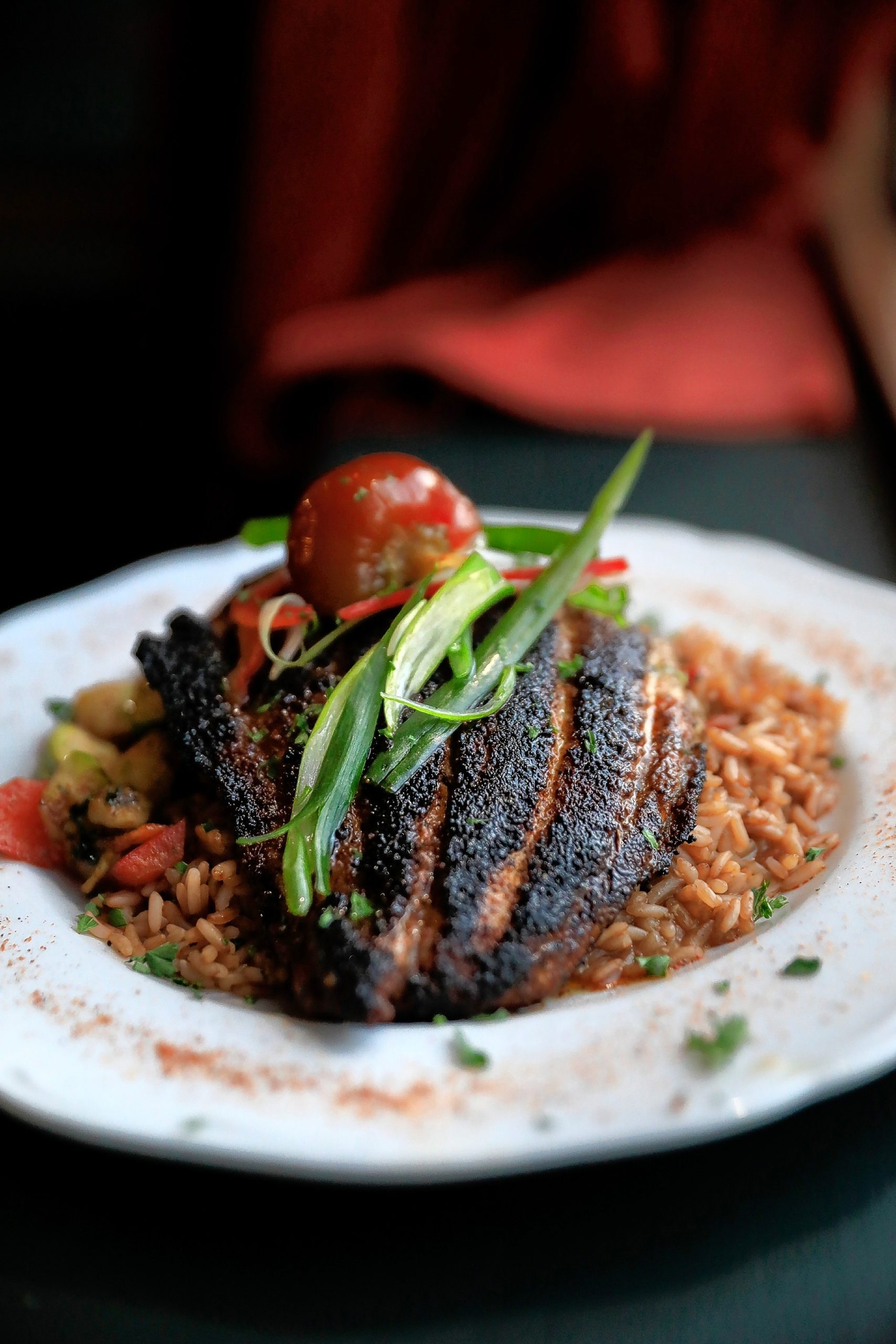
The blacked catfish dish with jambalaya rice and seasonal vegetables at Gombo Nola Kitchen & Oyster Bar on Main Street in Northampton.
The usual way to make catfish across the Gulf Coast is to dredge it in a cornmeal crust and deep-fry it in a vat of ultra-hot fat. Speaking of unpretentious, Claiborne prefers it with fries, hush puppies, and ketchup: “deep-fried catfish without ketchup is like a hot dog without mustard.”
At Gombo, the catfish does not come with ketchup. It doesn’t even come fried. It comes blackened, and it’s a winner, every single time.
The technique of blackening seafood, i.e. coating it in butter and spices and charring it in a cast-iron pan, is really neither Cajun nor Creole, but Prudhommean. Blackened seafood first debuted in the late 1970s at Prudhomme’s New Orleans restaurant, K-Paul’s Louisiana Kitchen.
Gombo’s blackened catfish does justice to this noble modern tradition, displaying just that “fine, sweet-fleshed” character that Claiborne swoons over. Its crackly pepper crust is soot-black without giving off any burnt aromatics, and it locks in moisture throughout the shockingly white hunk of fish beneath. This catfish is not muddy, not fishy, not oily, not flaky, not firm, not chewy, just … fine. And the Trinity shines through its lovely sauce.
Less convincing are the various versions of jambalaya, which can come either as an optional side-dish upgrade for the catfish (and some other mains) or as its own main course. Over several visits, I’ve sometimes had the jambalaya rice come out mushy and overcooked, other times crunchy and undercooked. Red beans and rice (a main course) suffer from these problems too, and fail to absorb the sausage flavors and aromas that should provide the savory backbone of this classic New Orleans dish.
Nonetheless, the menu’s highlights easily outnumber the lowlights. Most little details they get just right. Cornbread, for instance — at so many restaurants, a dry afterthought that’s not worth the calories — is crave-worthy, warm and soft in the middle with a pleasantly yeasty aftertaste. Rich bread pudding, a dessert, is even softer inside than the cornbread, and it soothes you into a deluxe after-meal stupor.
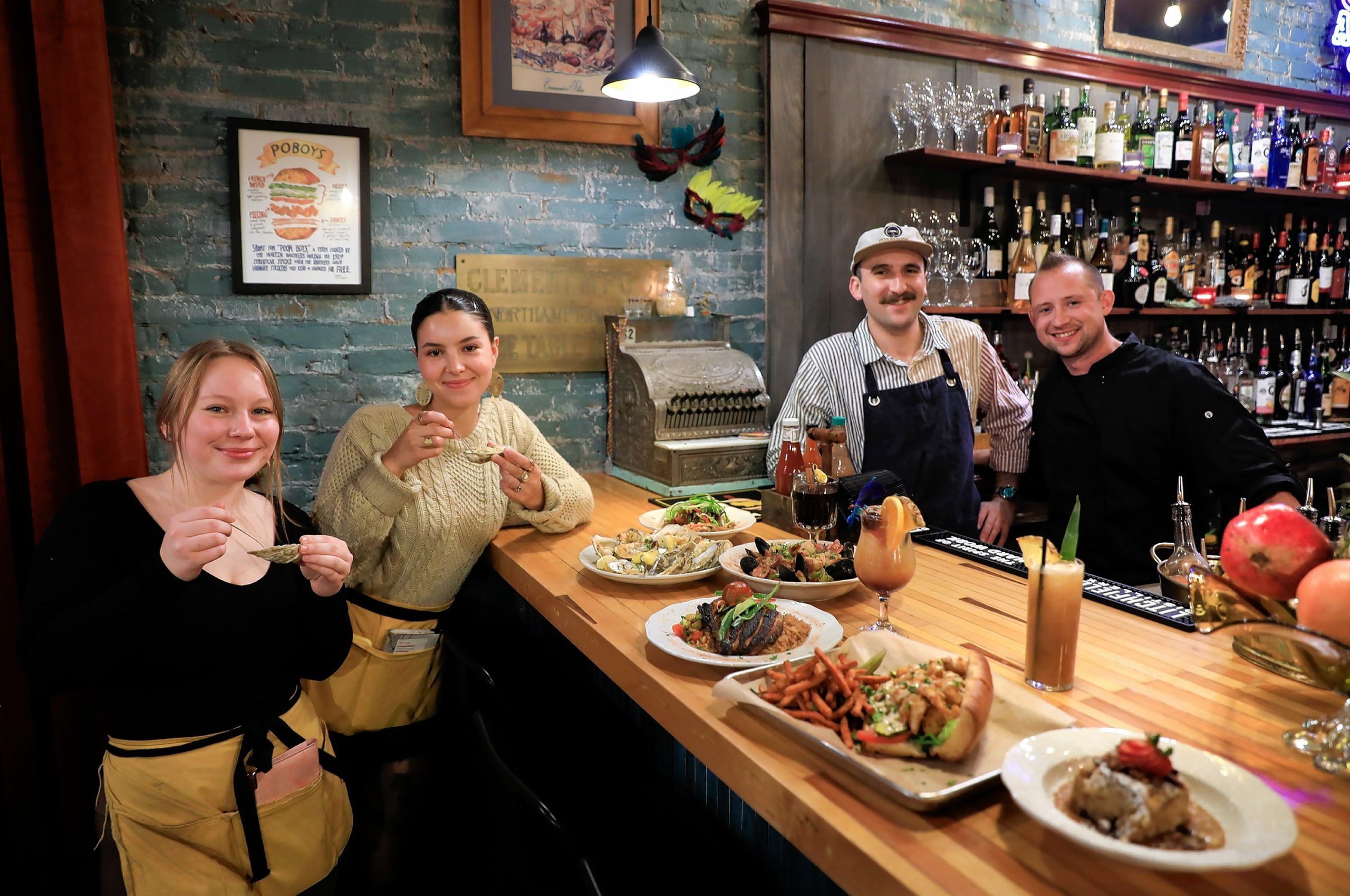
Owner and chef John Piskor, from right, poses for a photo with his staff Sam Baluzy, Nyah Forth and Kyah Woofenden at Gombo Nola Kitchen & Oyster Bar on Main Street in Northampton.
Prices aren’t cheap, but they’re reasonable for Northampton. I also like Gombo’s cocktails, although they’re even more not-cheap than the food. New Orleans’ classic Sazerac is on the sweeter end of the range but still well balanced, with a whisper of licorice flavor from the absinthe and a pretty presentation. Nicely made, too, is the Beehive, this bar’s take on the Bees’ Knees, a refreshing grapefruit-and-gin cocktail with honey, lime, ginger, and plenty of fresh acidity.
In the spirit of New Orleans — one of America’s live-music capitals and latest-night cities — I wish that Gombo had live music, and I wish their kitchen stayed open until 10 p.m. Before COVID, there were lots of sit-down places in Northampton where you could get a meal after 9 p.m. These days, there are very few. But I hold out hope that our city’s glorious nightlife will someday return, and with it, all the live music and late hours too.
Robin Goldstein is the author of “The Menu: Restaurant Guide to Northampton, Amherst, and the Five-College Area.” He serves remotely on the agricultural economics faculty of the University of California, Davis. He can be reached at rgoldstein@ucdavis.edu.

